Have you ever gazed up at the sky and marveled at the wonders of the universe, wondering about its secrets? Have you ever wondered “What is a hybrid solar eclipse?” In the grand cosmic theater, few spectacles rival the awe-inspiring beauty of a solar eclipse. Today, I invite you on a voyage of discovery deep into the heart of one of the universe’s most captivating enigmas – the hybrid solar eclipse.
A hybrid solar eclipse is a rare celestial event where the moon’s position and Earth’s curvature create a unique spectacle, blending the characteristics of both total and annular eclipses. During this phenomenon, observers along its path may witness both total and annular phases as the moon’s shadow shifts, offering a captivating and dynamic display in the sky.
Join me as I unlock the secrets of this celestial phenomenon, journey through its history, and unveil the science behind its mesmerizing display. This is your ticket to a breathtaking adventure through the cosmos, where science and wonder collide, and the universe’s most dazzling shows take center stage.
In this article, you get to
Explore the captivating world of hybrid solar eclipses.
Discover the definitions and characteristics of various types of solar eclipses.
Uncover the secrets behind the mechanics and rarity of hybrid solar eclipses.
Understand the unique transition phases that occur during a hybrid eclipse.
Prepare for a rich, albeit demanding, experience when witnessing a hybrid solar eclipse.
Travel back to the recent hybrid solar eclipse on April 20th, 2023, and relive its enchanting moments.
Examine fascinating tidbits and alternate names associated with hybrid solar eclipses.
Gain insight into the captivating and elusive nature of these celestial phenomena.
By the end of this article, you’ll have a deep understanding of what a hybrid solar eclipse is, its captivating characteristics, the science behind it, and the enchanting mysteries it holds, leaving you with a newfound appreciation for the wonders of the cosmos.
Let’s dive right in.
What is a Hybrid Solar Eclipse?

Imagine this celestial spectacle: the moon, in its graceful dance through the cosmos, gliding between the radiant sun and our beloved Earth. As it does so, it casts its ephemeral shadow upon our planet.
This captivating phenomenon, known as a solar eclipse, takes on various mesmerizing forms, each choreographed by the intricate interplay of the sun, moon, and Earth.
You may have witnessed a total eclipse, where the sun disappears completely, or perhaps a partial eclipse, where it’s only partially obscured.
Then there’s the annular eclipse, where a fiery ring of the sun’s brilliance remains visible.
But within this cosmic ballet, there exists a rare and remarkable gem—the hybrid solar eclipse.
This extraordinary celestial event seamlessly fuses the captivating characteristics of both a total and an annular eclipse, creating a visual symphony that astounds all who are fortunate enough to witness it.
During a hybrid solar eclipse, the moon’s shadow dances upon Earth, offering a unique perspective of our place in the universe. For some fortunate observers, it begins as an annular eclipse, with the sun forming a brilliant ring around the moon’s silhouette.
But as the moon continues its celestial waltz, its shadow intensifies, transforming the spectacle into a total eclipse, plunging the world into darkness, if only for a moment.
The Eclipse Spectrum
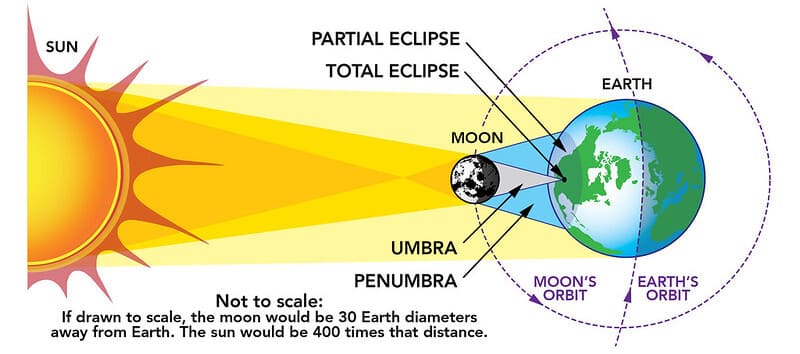
Total Solar Eclipse
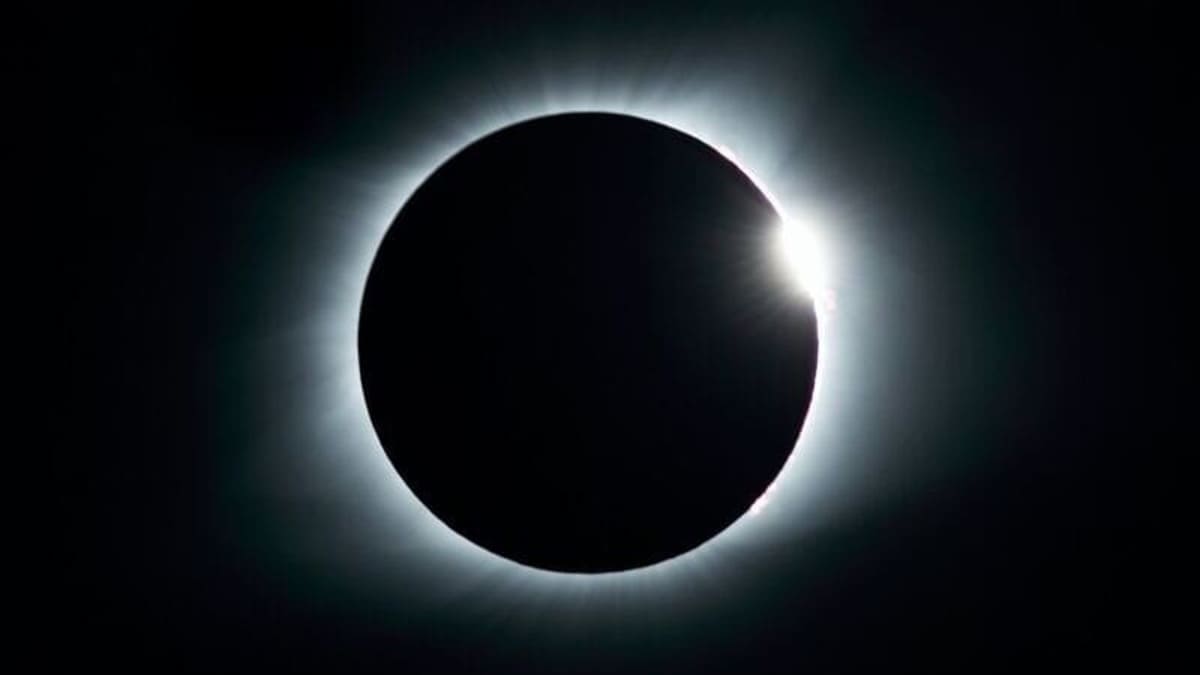
The moon’s complete concealment of the sun’s disk forms the captivating umbra. Within this shadow, fortunate observers witness the sun’s ethereal outer atmosphere, the solar corona, as a luminous halo encircling the moon.
Partial Solar Eclipse
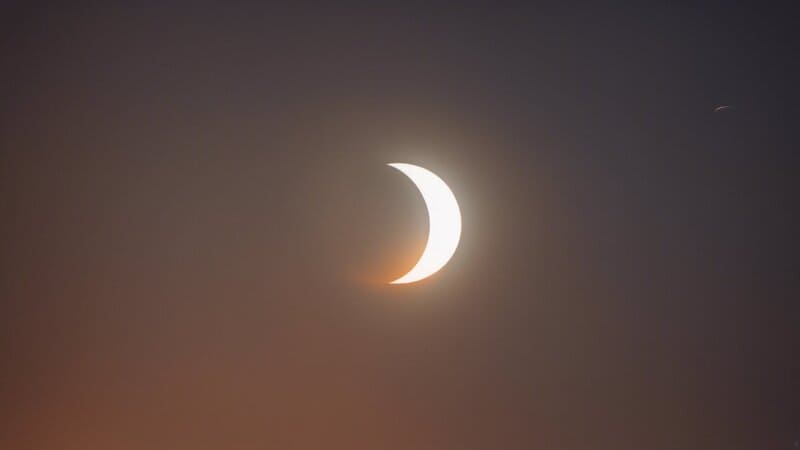
Here, the moon partially obscures the sun, casting a lighter shadow known as the penumbra. Inhabitants within this zone witness a crescent-shaped sun.
Annular Solar Eclipse

When the moon stands at a distance, incapable of fully covering the sun, a ring of sunlight emerges—a luminous annulus. For those within the antumbra, an extended half-shadow, the annular eclipse unfolds in its splendor.
The Rarity of Hybrid Eclipses
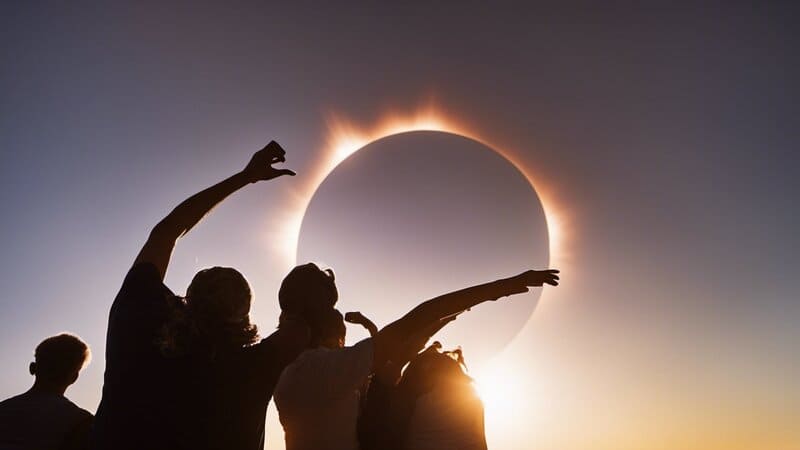
Hybrid solar eclipses are precious cosmic occurrences, demanding precise alignment of the sun, moon, and Earth.
The moon’s elliptical orbit and Earth’s varying distance from the sun contribute to the unpredictability of these events. Earth’s curved surface further influences the distribution of the moon’s shadow during an eclipse.
Thus, hybrid eclipses are not just rare but also capricious.
They may manifest at any time, at any location on Earth, and exhibit varying appearances from one event to another. Some hybrids initiate as annular and transition to total, while others reverse this progression. Brightness, color shifts, temperature fluctuations, and even changes in animal behavior can accompany this mesmerizing celestial theater.
Witnessing the Hybrid Eclipse

Prepare for a celestial spectacle as you embark on the remarkable journey of observing a hybrid solar eclipse.
This cosmic event promises a rich and immersive experience, but it does come with its demands. Your vantage point along the central eclipse path becomes your window to the cosmos, determining which phases of this captivating phenomenon you will encounter: partial, annular, total, or the elusive hybrid.
As you gaze skyward, be ready for a mesmerizing dance of light and shadow. The brightness may fluctuate, casting an ever-shifting play of colors across the canvas of the sky. Subtle temperature variations can add more intrigue to the experience, creating a dynamic environment that engages all your senses. Keep a watchful eye on the world around you, for during this celestial event, even the behavior of animals may undergo fascinating transformations.
However, caution is essential: while you immerse yourself in the celestial theater, never underestimate the sun’s power. Protect your eyes adequately with solar filters or eclipse glasses. Failing to do so may result in irreversible damage or even blindness, casting a shadow over this otherwise awe-inspiring encounter with the cosmos.
Related article: How Do Solar Eclipse Glasses Work?
Witnessing a hybrid eclipse is not just an astronomical event; it’s a journey of discovery, a symphony of science and wonder that leaves an indelible mark on those fortunate enough to behold it.
The Recent Hybrid Solar Eclipse
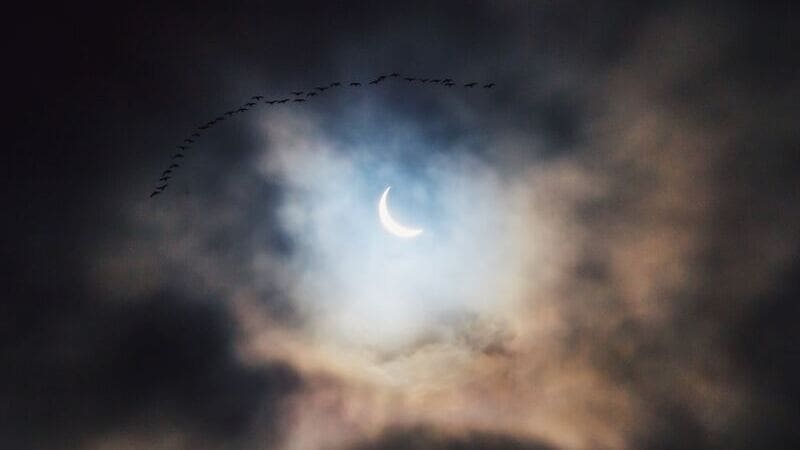
Step into the cosmic calendar as we recount the mesmerizing tale of the most recent hybrid solar eclipse, which graced our skies on April 20, 2023.
Read my article on how often solar eclipses occur in the US.
This astronomical event, a celestial masterpiece, unfolded its splendor over several regions, including Indonesia, Australia, Papua New Guinea, Timor-Leste, and the vast expanse of Antarctica.
Picture this: as the moon’s shadow embraced the sun, a breathtaking spectacle unveiled itself before the fortunate onlookers. The peak totality period spanned a thrilling 1 minute and 16 seconds, a brief yet unforgettable moment in the grand cosmic scheme.
But let’s pause for a moment of reflection. Hybrid solar eclipses, though utterly captivating, are elusive and unpredictable. They grace our world on average once a decade, making each appearance a rare and cherished occurrence in astronomical events. As we stand beneath the celestial canvas, we are reminded of the enchanting enigma of the cosmos.
This recent hybrid solar eclipse serves as a testament to the universe’s wonders, a reminder that while we can predict the movements of celestial bodies, the cosmos still harbors secrets that continue to captivate and inspire us.
Fascinating Tidbits About Hybrid Solar Eclipses
- Alternate Names: Hybrid solar eclipses are also known as annular/total or A/T eclipses.
- Baily’s Beads: Occasionally, they gift us with Baily’s beads—bright spots of sunlight that filter through valleys on the moon’s edge during an eclipse.
- Transit Events: Beware of confusing them with transit events, when smaller celestial bodies like Mercury or Venus glide before larger ones, such as the sun.
Summary: What is a Hybrid Eclipse
Thank you for reading my article “What is a Hybrid Solar Eclipse?”
Hybrid solar eclipses are cosmic marvels, unveiling the intricacies and beauty of our universe.
These rare and unpredictable celestial phenomena offer diverse experiences to observers around the globe. They serve as windows to unravel the interplay between the sun, moon, and Earth, enriching our understanding of the cosmos.
Should you ever find yourself with the opportunity to witness a hybrid solar eclipse, seize the moment and marvel at the wonders of the universe.
Interested in more Solar Eclipse articles?




